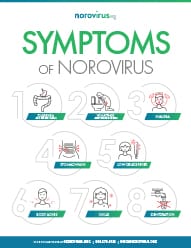The continued spread of the bird flu, or avian influenza, has triggered global concerns about food safety, particularly with staple foods such as milk and eggs. As poultry farms and livestock face the brunt of this viral outbreak, questions have arisen regarding whether humans can contract the disease through the consumption of these products. While bird flu predominantly affects avian species, its rise has understandably left many consumers uneasy about their everyday dietary choices.
Bird flu is caused by avian influenza viruses, including strains such as H5N1 and H7N9, which predominantly infect birds. In some rare cases, these viruses have crossed species barriers, infecting humans and other mammals. This typically occurs through direct contact with infected birds or their secretions. Experts across the medical and regulatory spectrum have so far emphasized that the risks associated with consuming dairy and poultry products, such as milk and eggs, remain remarkably low if proper precautions are adhered to.
To understand the potential risks, it is paramount to distinguish between raw and processed products. Pasteurization, a heat treatment process applied to milk and other dairy products, is a fundamental shield against harmful bacteria and viruses, including avian influenza viruses. The U.S. Centers for Disease Control and Prevention (CDC) and other international bodies have repeatedly assured that pasteurized milk is safe for consumption during this outbreak. Raw milk, however, is a different story. Its consumption continues to carry risks of contamination, not just from avian flu but from a plethora of bacterial and viral pathogens. Research has demonstrated that avian influenza cannot survive pasteurization, reassuring consumers about the efficacy of food safety practices.
Similarly, eggs have drawn scrutiny during the bird flu outbreak due to their origin from potentially affected poultry farms. However, no verified cases of bird flu transmission through cooked eggs have been reported. This is owed, in large part, to proper cooking practices. The U.S. Department of Agriculture (USDA) recommends cooking eggs until both the yolk and whites are firm—this typically ensures an internal temperature of 160 degrees Fahrenheit, effectively eliminating any risk of contamination. It is also worth noting that food safety inspections rigorously monitor egg production facilities, removing infected poultry from the supply chain before their eggs enter markets.
Of particular concern among consumers is the possibility of cross-contamination during the handling of raw eggs or milk. While this risk is minor in regard to bird flu due to its inability to easily infect humans via ingestion, vigilance around general hygiene is advised. Proper handwashing, the sanitization of surfaces, and keeping raw products separate from ready-to-eat foods are foundational steps that reduce the risk of any foodborne illnesses.
The bird flu outbreak has not just raised health concerns but also impacted food prices and availability. Egg shortages in some regions—brought on by the culling of infected birds—have led to price hikes. Affected farms have implemented precautionary measures such as lockdowns and biosecurity protocols to prevent the further spread of avian flu among poultry flocks. These actions, while necessary to manage the outbreak, contribute to supply chain disruptions that resonate with consumers.
Globally, governments and health authorities are studying the spread of avian influenza to assess emerging risks. The World Health Organization (WHO) and national public health agencies continue to monitor the situation while updating safety guidelines and best practices for both consumers and producers. Their message remains consistent: properly handled and cooked milk and eggs are safe.
For consumers, a prudent approach is advisable. While normal shopping habits need not be completely overhauled, focusing on pasteurized milk and well-cooked eggs can mitigate any conceivable risks. Purchasing eggs and dairy from reputable brands or stores is an additional safeguard, as these entities are more likely to adhere to rigorous quality control.
The bird flu outbreak is a tragic blow to ecosystems and economies, but misinformation should not intensify its impact. For millions reliant on these staple foods, the reassurance provided by stringent food safety measures is heartening. As researchers and authorities navigate this crisis, consumers can contribute by staying informed, following recommended guidelines, and practicing good hygiene at home. Knowledge is our strongest ally in reducing unwarranted fears and maintaining trust in the systems that deliver food to our tables.


